基于单片机的智能交通灯设计
无需注册登录,支付后按照提示操作即可获取该资料.
基于单片机的智能交通灯设计(任务书,开题报告,论文14000字)
摘 要
汽车已经普及的今天,一套完善的交通灯系统对于城市的交通通行效率,居民的出行效率和安全都起着至关重要的作用。交通灯是交通系统必不可缺的一环。智能交通灯与传统的区别在于,其应对突发情况时可以更加高效。比如道路事故导致交通瘫痪,电力系统出现突发故障等情况出现时,不应该影响道路正常的使用,结合此需求,产生了本设计基于单片机的智能交通灯设计。
本系统主要参考十字路口交通灯案例,结合智能交通系统的需求,基于STC89C52单片机,利用C语言编程,开发了一套智能交通灯系统。本设计特点主要有:具备一般的交通信号灯的功能,并且使用了双电源供电系统,以确保任何时刻交通灯都可以正常工作,加入了人工干预设置,以防止道路突发情况的出现,还增加了高低峰时段管理系统,确保道路通行效率。
关键词: 单片机 STC89C52 交通灯 分时系统 双电源
Intelligence Traffic lights Control System Based on Single Chip Micyoco
Abstract
Car has been popular today, a perfect set of traffic lights system for urban traffic efficiency, residents travel efficiency and security plays an important role. And the essential part of the traffic light is traffic system. Intelligent traffic lights with traditional difference is that the case of emergency can be more efficient. Such as road traffic paralysis in the accident, such as power system appear abrupt failure happens, should not affect the normal use of roads, in combination with the demand, has produced this design intelligent traffic light design based on single chip microcomputer.
This system mainly refer to the intersection traffic light cases, combining with the demand of the intelligent transportation system, based on STC89C52 microcontroller, using C language programming, has developed a set of intelligent traffic light system. This design features are: has the general function of the traffic lights, and using the dual power supply system, to ensure that any time the lights can work normally, joined the manual intervention, to prevent the emergence of roads emergency management system has increased the highs time, ensure the traffic efficiency.
Keywords: Single Chip ;STC89C52 ;Traffic Light ;Time-Shared System ;Duplicate power
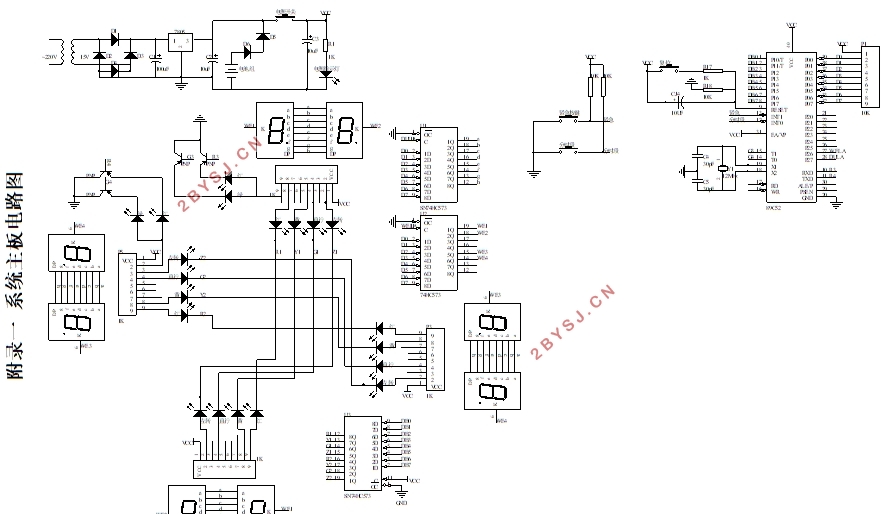
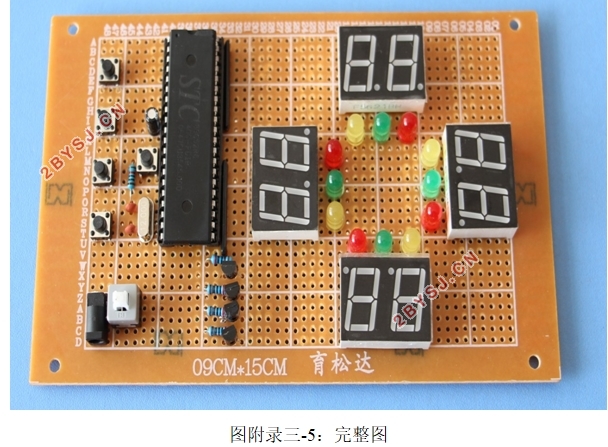
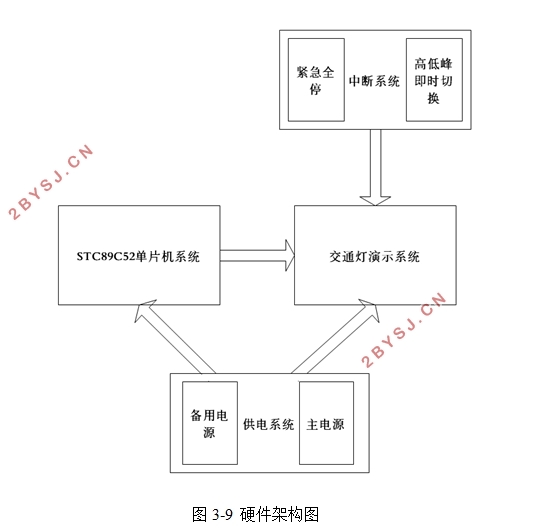
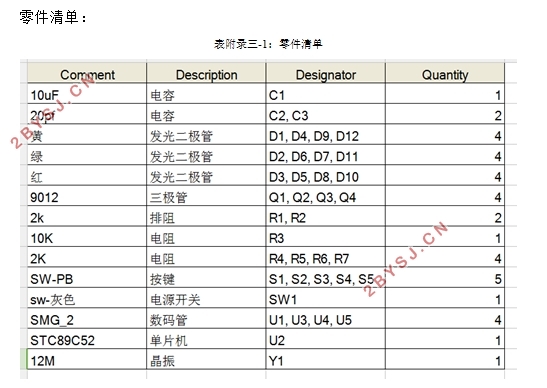
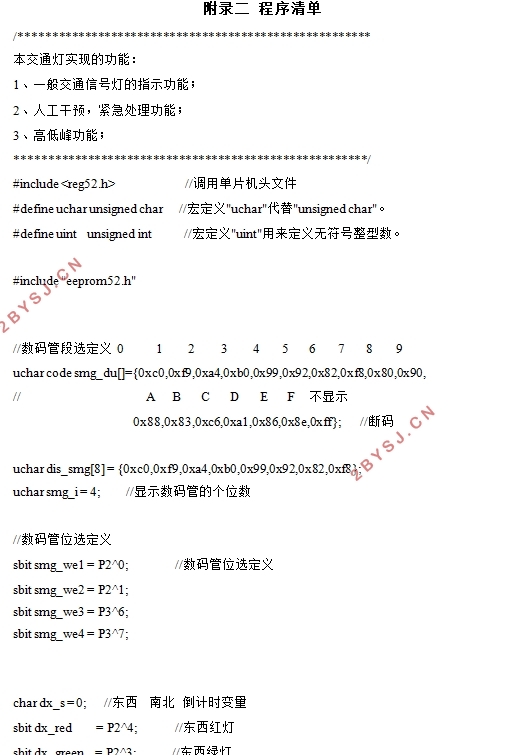
目 录
摘要 I
Abstract II
第一章 绪论 1
1.1引言 1
1.2 智能交通灯研究的意义 1
1.3智能交通灯研究的背景 2
1.4国外交通智能系统现状 2
1.5我国交通系统现状 3
1.6课题内容 4
1.7课题意义 4
1.8本文章节安排 5
第二章 交通灯智能控制系统方案设计 6
2.1信号灯的基本情况 6
2.2单片机相关介绍 6
2.3 供电方案设计 7
2.4显示界面方案设计 8
2.5 输入方案设计 8
2.6本章小结与概括 9
第三章 系统设计 10
3.1 交通灯规则方案 10
3.1.1 相位的概念 10
3.1.2 交通灯状态 10
3.1.3 高低峰分时管理机制 14
3.2 软件编程 15
3.3 硬件设计部分 17
3.3.1 单片机系统 18
3.3.2 交通灯演示系统 20
3.3.3 双电源供电电路 21
3.3.4 中断系统 22
3.4本章小结与概括 23
第四章 系统调试 24
4.1 断电调试 24
4.2 通电调试 24
4.3 基本要求部分的测试与分析 28
4.4本章小结与概括 29
第五章 结论 30
参 考 文 献 31
致 谢 33
附录 34
附录一 系统主板电路 34
附录二 程序清单 35
附录三 实物清单与产品展示 48
